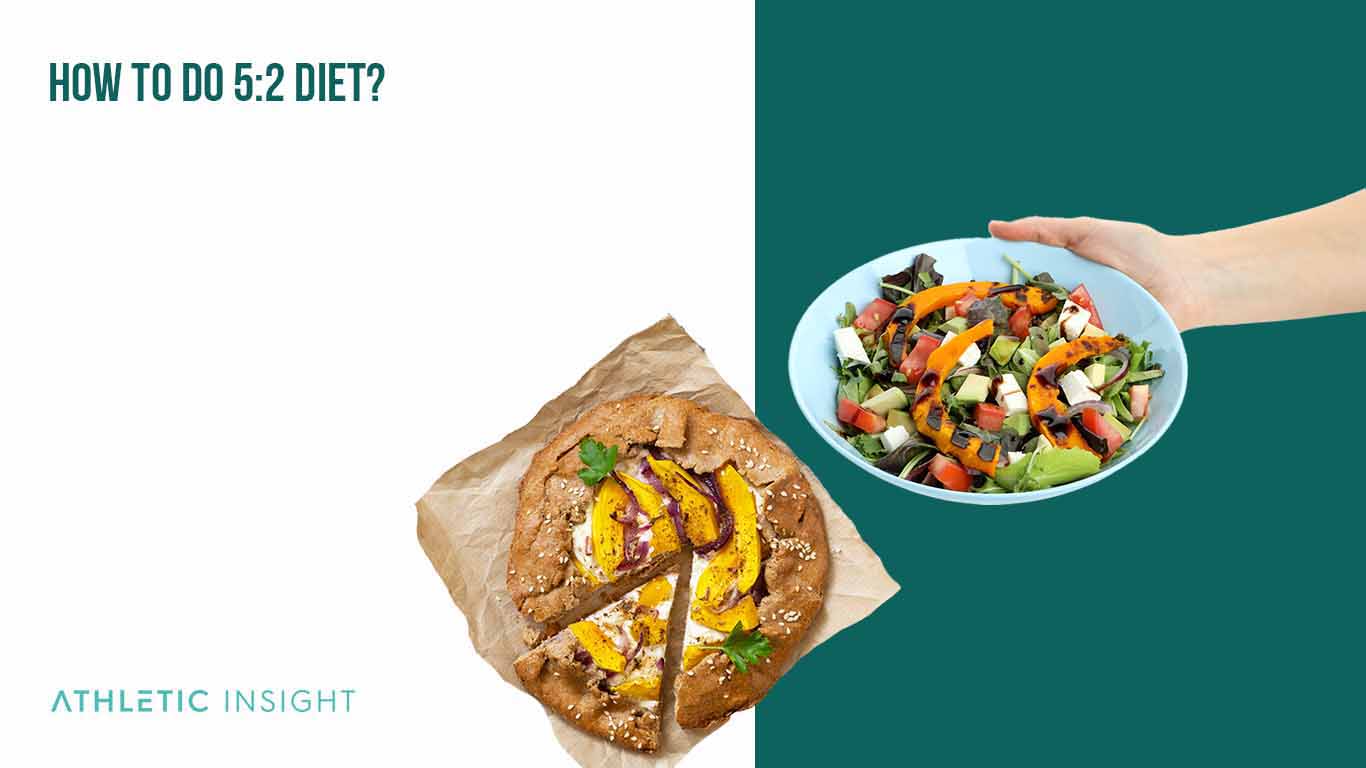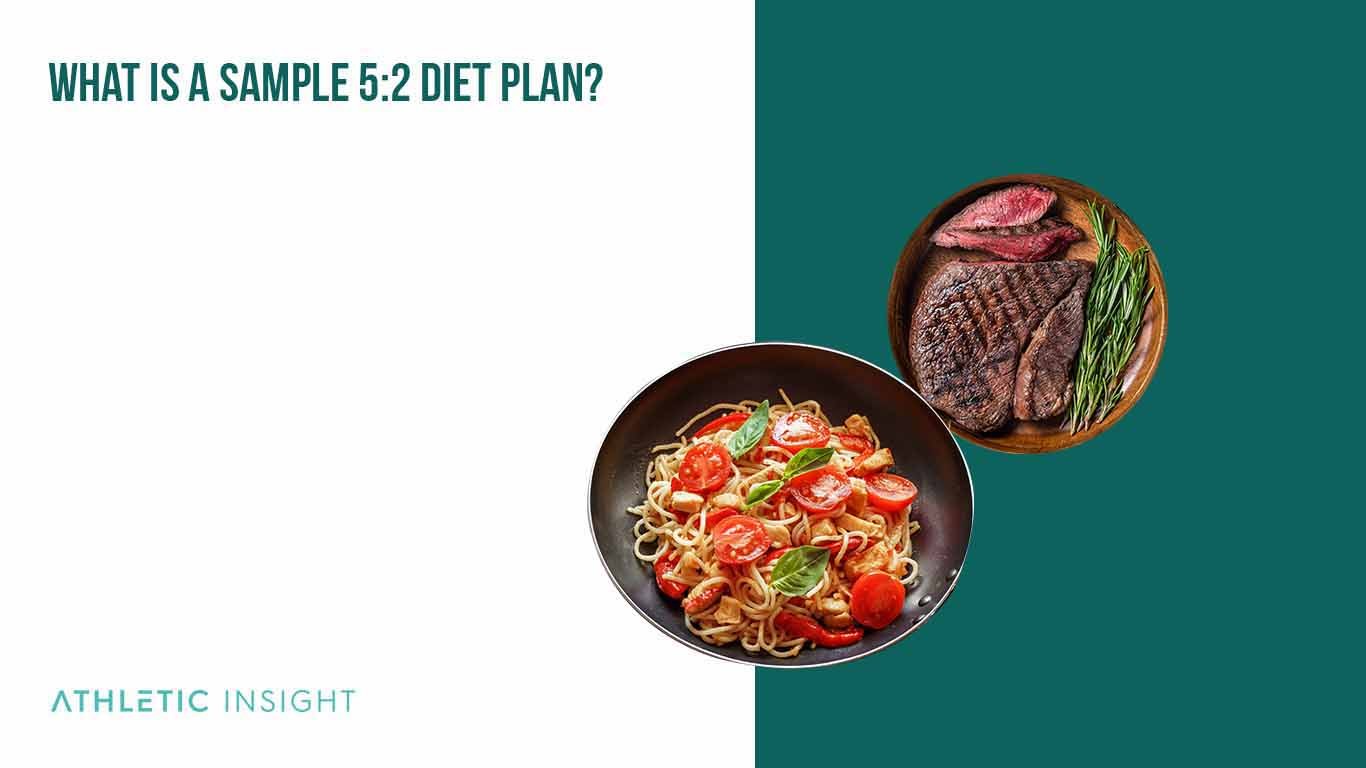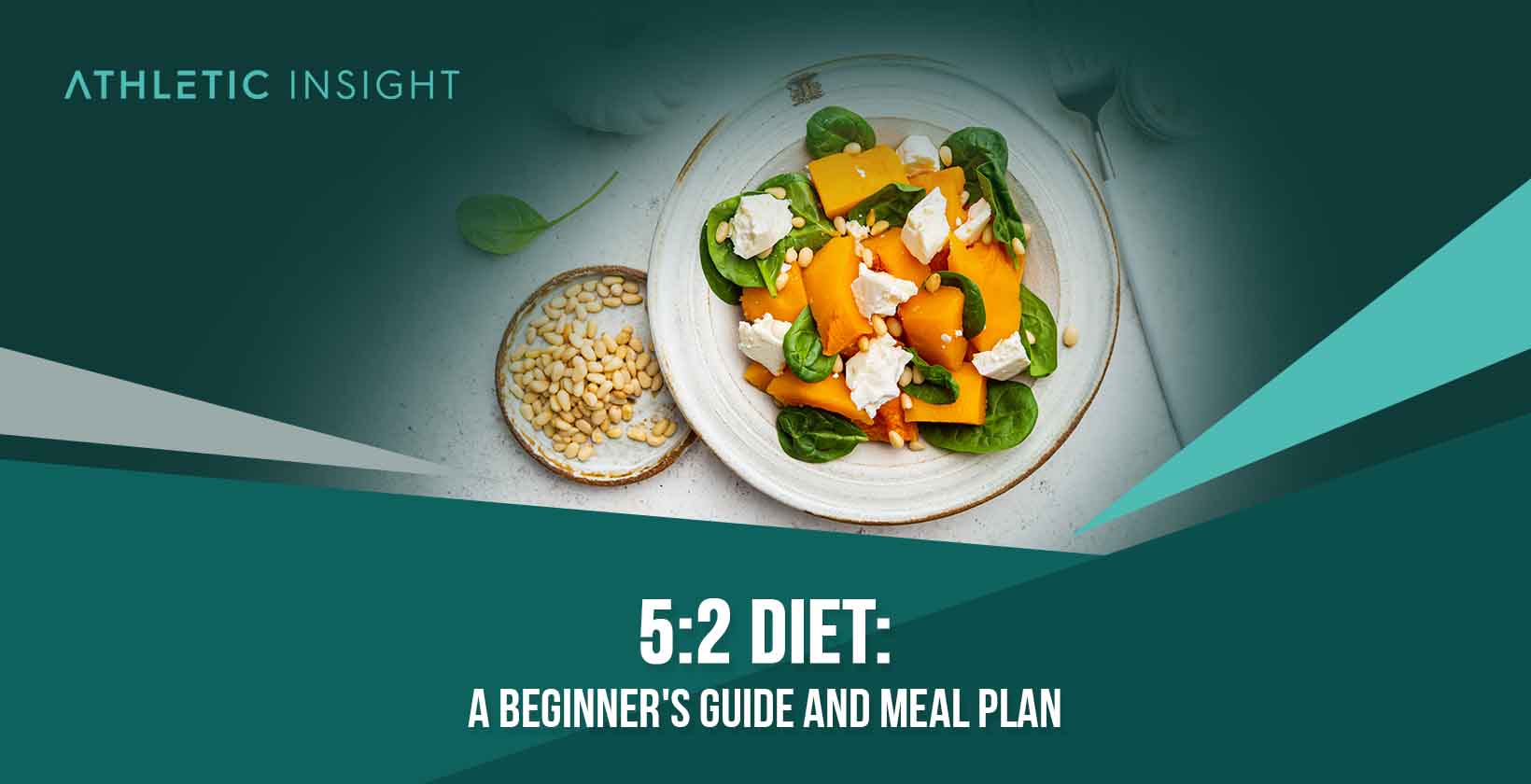The 5:2 diet, also known as intermittent fasting, is an effective way to maintain a healthy weight. It has been proven beneficial for overall health, reducing inflammation, and improving cholesterol levels. The 5:2 diet involves restricting your calorie intake two days a week while eating normally on the other five days. Fasting provides numerous health benefits, such as improved weight loss and regulation of hormones.

Reduced Inflammation
Improved Cholesterol
Better Overall Health
Overall, the 5:2 diet can effectively maintain a healthy weight and improve overall health. Be sure to consult your doctor before starting the 5:2 diet, and ensure it is the right choice. With proper planning and dedication, you can successfully implement this diet into your lifestyle.
This article provides an overview on the 5:2 diet, research-supported findings, allowed foods, potential benefits and risks, and a sample meal plan so you can get started immediately. By the end of this article, you will have everything necessary for making an informed decision about whether or not the 5:2 diet is suitable for achieving your goals.
What Is the 5:2 Diet?
The 5:2 diet is based on the fasting-mimicking diet (FMD) developed by researchers from the University of Southern California. The FMD was designed to reduce risk factors associated with aging, cancer, diabetes, and heart disease. While there are other fasting diets, the 5:2 Diet has is considered one of the best diet plans when it comes to getting into a state of boosted cognitive performance, reduction of inflammation and fat burn.

The 5:2 diet provides a safe balance between calorie restriction and healthy eating. When you are not fasting, you should eat balanced meals, including proteins, carbohydrates, fats, and vegetables. You can also have snacks such as nuts or fruit throughout the day. Restricting your calorie intake to 500 – 600 calories on fasting days is recommended.
When beginning the 5:2 diet, it can be helpful to limit your calorie intake gradually. Start fasting one day a week and then slowly increase to two days if necessary. It is essential to stay hydrated on fasting days and maintain regular meal times on the other five days.
In addition to eating healthy meals on the 5:2 diet, it is essential to add physical activity. Exercise helps maintain muscle mass and can help you reach your weight loss goals faster. Aim for about 30 minutes of exercise at least five days a week.
How Does the 5:2 Diet Work?
The 5:2 diet works by putting your body into a state of fasting. While fasting, your body will use stored energy and burn fat, which can lead to weight loss.
On 5:2 diet days, your body will enter a state of ketosis, where it begins to break down fat more rapidly, which helps you reduce overall body fat while preserving muscle mass. It also slows the digestion process and promotes better metabolism and hormone regulation.
The 5:2 diet also provides a sense of discipline and structure to help you stick with your healthy eating goals. As long as you follow the 5:2 diet and keep up healthy eating habits, you should see results within 2-3 months.
When you first start the 5:2 diet, you will notice an immediate reaction from your body. Your energy levels will fluctuate, and you may feel tired or weak. These symptoms are typical and should dissipate as your body adjusts to the 5:2 diet.
What Are the Health Benefits of the 5:2 Diet?
There are many potential health benefits to using the 5:2 diet such as weight loss, improved cholesterol levels, reduced risk of heart disease, improved blood pressure, improved hormonal balance and metabolism, enhanced cognitive function, and reduced insulin levels.
- Weight loss: By restricting your calorie intake, you can reduce your overall body fat and achieve weight loss.
- Improved cholesterol levels: Studies have shown that the 5:2 diet can reduce bad cholesterol levels and improve overall heart health.
- Reduced risk of heart disease: The 5:2 diet reduces your risk of heart disease.
- Improved blood pressure: Research also suggests that the 5:2 diet can help reduce high blood pressure.
- Improved hormonal balance and metabolism: The 5:2 diet reduces hormone insulin levels, helping regulate metabolism.
- Enhanced cognitive function: Studies have linked prolonged fasting to increased focus and concentration.
- Reduced insulin levels: The 5:2 diet has been linked to reduced insulin levels, helping reduce the risk of type 2 diabetes.
What Are the Health Risks of the 5:2 Diet?
Despite the health benefits, there are some risks following the 5:2 diet such as difficulty sleeping, irritability, loss of muscle mass, anxiety, and daytime sleepiness.
- Difficulty sleeping: The 5:2 diet can disrupt your sleep because fasting affects your hormones, making it more challenging to get a good night’s rest.
- Irritability: Fasting can cause irritability as your body adjusts to the changes in energy levels.
- Loss of muscle mass: When following the 5:2 diet, it is essential to exercise regularly to maintain muscle mass. If you don’t get enough physical activity, you may experience muscle loss as your body breaks down its tissue.
- Anxiety: Fasting can cause stress, especially regarding meal times, because your body is not used to being denied food and may respond negatively.
- Daytime sleepiness: Fasting can increase your risk of feeling sleepy during the day, as your body may be trying to conserve energy.
How to Do a 5:2 Diet?
While on the 5:2 diet, the number of calories you can consume depends on the day of the week. On regular days, you can consume 1800-2500 calories. On fasting days, you restrict your diet to 500-600 calories. You can adhere to the 5:2 diet by following these steps.
- Step 1: Eat a healthy, balanced diet five days a week. Focus on lean proteins, complex carbohydrates, and plenty of fruits and vegetables.
- Step 2: On two days of the week, restrict your calorie intake to 500-600 calories for women and 600-800 calories for men.
- Step 3: On 5:2 days, you can either fast ultimately or have several mini-meals of about 100-200 calories throughout the day.
- Step 4: Drink plenty of water and get enough sleep during 5:2 days to help your body keep up with the changes.
- Step 5: Exercise regularly on 5:2 days to maintain muscle mass and promote healthy weight loss.
- Step 6: Monitor your progress regularly and consult a doctor if you experience adverse symptoms or changes.

The best time frame for the 5:2 diet is two to three months, which is enough time to see results. If you want to follow the 5:2 diet, there are some best practices you should follow.
- Eat fresh and whole foods: Eating natural foods is the best way to ensure you get the most nutrients.
- Avoid processed foods: Processed foods are usually high in sugar and other unhealthy ingredients, which can cause spikes in blood sugar levels.
- Eat at the same time every day: Eating at the same time helps your body adjust to the 5:2 diet and helps your metabolism stay active.
- Stay hydrated: Drinking enough water is essential for staying healthy on the 5:2 diet, as it helps to reduce hunger and keep you hydrated.
- Get enough sleep: Getting a good night’s sleep is an integral part of the 5:2 diet, as it helps your body recover from the fasting periods.
What Are the Foods that You Can Eat While on a 5:2 Diet?
There are no food restrictions while on the 5:2 diet, so the 5:2 diet food list is long. You can eat whatever you want.
- Fruits: apples, oranges, bananas, and berries
- Vegetables: spinach, cauliflower, broccoli, and kale
- Grains: quinoa, oats, brown rice, and millet
- Legumes: lentils, kidney beans, and chickpeas
- Nuts: almonds, walnuts, and cashews
- Seeds: chia seeds, hemp seeds, sunflower seeds
- Proteins: lean meats, eggs, legumes, and nuts
- Healthy fats: avocados, olive oil, coconut oil

Reduced Inflammation
Improved Cholesterol
Better Overall Health
What Are the Foods that You Should Avoid While on a 5:2 Diet?
There are no foods that you need to avoid on the 5:2 diet. On the days that you are achieving a fasting state, you should avoid high-calorie foods like sweets and cakes to ensure that you don’t consume over your limit.
Who Should Do the 5:2 Diet?
The 5:2 diet is suitable for healthy adults looking to lose weight sustainably and healthily. Since the diet is not restrictive and you can eat whatever you want, it is easy to get the nutrients your body needs to stay healthy.
The 5:2 diet is excellent for bodybuilders and athletes, as it helps them maintain lean muscle mass while allowing the body to rest and repair. The 5:2 bodybuilding diet is popular among athletes and bodybuilders who need to maintain muscle mass while losing weight.
People who have preexisting medical conditions or are pregnant should check with their doctor before beginning the 5:2 diet. The 5:2 diet is not suitable for children or adolescents.
How Easy Is the 5:2 Program to Follow?
The 5:2 program is easy to follow because there are few restrictions, and you can eat whatever you want. The main challenge is the calorie restriction on fasting days, but as long as you stick to the 5:2 guidelines, it should not be a problem. It is also essential to plan and create meal plans for 5:2 days, so you don’t end up overeating.
What Is a Sample 5:2 Diet Plan?
This list is an example of a 5:2 Diet plan.

- Day 1
- Breakfast: bagels and cream cheese with berries
- Lunch: smoked salmon and avocado salad
- Dinner: Chicken fajitas and potato wedges
- Day 2
- Breakfast: tomato and mushroom omelet
- Lunch: beef tacos
- Dinner: beef bolognese with penne
- Day 3
- Breakfast: toast with peanut butter
- Lunch: bolognese with chickpeas
- Dinner: chicken noodle soup
- Day 4
- Breakfast: BLT sandwich
- Lunch: Greek salad
- Dinner: Sausages and mash
- Day 5
- Breakfast: Bagel with cream cheese
- Lunch: Baked potato with cheese and beans
- Dinner: Grilled chicken with vegetables
- Day 6
- Breakfast: oatmeal with berries
- Lunch: vegetable soup
- Dinner: baked tuna and broccoli
- Day 7
- Breakfast: spinach and cheese omelet
- Lunch: grilled chicken with vegetables and rice
- Dinner: breaded mahi mahi, fries, and vegetables
What Are the Best Recipes for the 5:2 Diet?
There are many great recipes for the 5:2 diet such as the following items.
- Spiced carrot and lentil soup: This low-calorie soup is perfect for your fasting days
- Thai prawns with pineapple and vegetables: Enjoy this delicious and easy-to-make meal on your 5:2 days.
- Chickpea, tomato, and spinach curry: This curry is loaded with flavor and protein.
- Spiced chicken salad: This flavorful salad is an excellent 5:2 meal with lots of flavor and few calories.
- Ricotta, tomato, and spinach frittata: This quick breakfast frittata is perfect for an on-the-go morning.
What Are the Facts About the 5:2 Diet?
You should know some essential facts about the 5:2 diet, including what happens in the first week, weight loss, health benefits, the cost, and the length of the diet.
- The first week: When you begin the 5:2 diet, your body will need time to adjust. During the first week, listening to your body and ensuring that you eat healthy, nutritious food on your 5:2 days is vital.
- Weight loss: 5:2 dieters can expect to lose up to 5 percent of their body weight in the first three months.
- Health benefits: 5:2 dieters can experience many health benefits, such as reduced cholesterol levels, improved heart health, and stronger bones.
- Cost: 5:2 dieters don’t need to invest in special foods or equipment, and the 5:2 diet is relatively inexpensive.
- Length of the diet: 5:2 dieters can safely stay on the 5:2 diet for up to 6 months.
How Much Does the 5:2 Program Cost?
The 5:2 program requires no special foods or equipment and is relatively inexpensive. You only need to purchase healthy, nutritious food. Additionally, you may need to buy an app to track your food on your two fasting days.
What Are the Alternatives to the 5:2 Diet?
There are many alternatives to the 5:2 diet, including clean eating, intermittent fasting, and whole-food plant-based diets.
- Clean Eating: Clean eating focuses on whole, unprocessed foods.
- Intermittent Fasting: Intermittent fasting involves alternating between periods of fasting and eating.
- Whole-Food Plant-Based Diet: Whole-food plant-based diets focus on whole, unprocessed plant-based ingredients like fruits, vegetables, nuts, and legumes.
How to Find a 3D 5:2 Diet Printable Plan?
A 3D 5:2 diet printable plan is available on the official 5:2 Diet website and in the 5:2 Diet book.
What Does a 5:2 Diet PDF Involve?
A 5:2 diet pdf has everything you need to know about the 5:2 diet. It includes information on how to get started, meal plans, recipes, health benefits, and the risks associated with 5:2 dieting. The 5:2 diet pdf can help 5:2 dieters stick to their goals and achieve their weight loss objectives.

Reduced Inflammation
Improved Cholesterol
Better Overall Health



